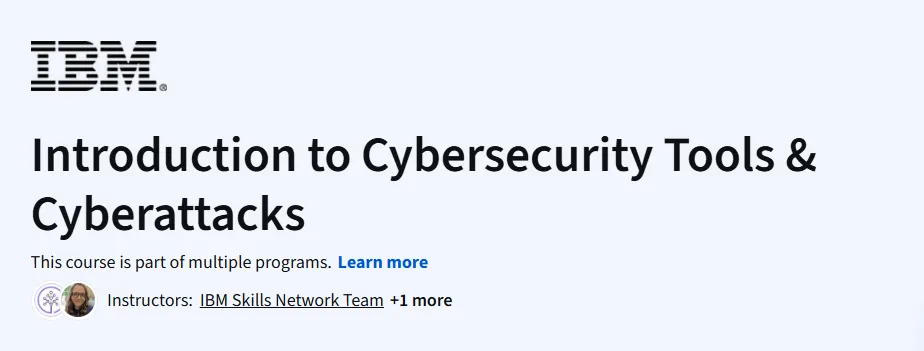What will you learn in Introduction to Cybersecurity Tools & Cyberattacks Course
Understand core cybersecurity concepts and the threat landscape.
Identify different types of cyber attacks and their consequences.
Learn how security breaches occur and how to prevent them.
Explore risk management and the importance of cybersecurity policies.
Program Overview
Module 1: Cybersecurity Fundamentals
⏱️ 1 week
Topics: What is cybersecurity, goals of security, CIA Triad
Hands-on: Identify vulnerable systems and basic risk scenarios
Module 2: Types of Cyber Attacks
⏱️ 1 week
Topics: Malware, phishing, ransomware, social engineering
Hands-on: Analyze attack case studies and real-world breaches
Module 3: Attack Vectors and Methodologies
⏱️ 1 week
Topics: Network attacks, man-in-the-middle, password cracking
Hands-on: Simulated scenarios of attack chains and response tactics
Module 4: Cybersecurity Measures & Prevention
⏱️ 1 week
Topics: Firewalls, encryption, access control, incident response
Hands-on: Evaluate tools and create a personal security checklist
Module 5: Cybersecurity in Practice
⏱️ 1 week
Topics: Security policies, user behavior, risk mitigation strategies
Hands-on: Draft a simple cybersecurity policy for a sample business
Get certificate
Job Outlook
Cybersecurity professionals are in extremely high demand.
Entry-level roles include security analyst, incident responder, and SOC analyst.
Salaries range from $60,000 to $120,000 depending on role and region.
Opportunities for advancement to ethical hacking and cyber forensics.
Specification: Introduction to Cybersecurity Tools & Cyberattacks
|
FAQs
- No prior cybersecurity experience is required; the course starts with foundational concepts.
- Basic computer literacy helps, but prior IT knowledge isn’t mandatory.
- Step-by-step guidance explains tools, threats, and defense mechanisms.
- Learners can practice safely using simulated environments.
- Hands-on exercises ensure beginners gain practical understanding.
- The course includes exercises with common cybersecurity tools for monitoring and analysis.
- Learners practice identifying vulnerabilities and analyzing threats.
- Step-by-step labs simulate real-world cyberattack scenarios.
- Guided exercises build familiarity with tools used in professional cybersecurity roles.
- Hands-on practice helps learners develop critical analytical and defense skills.
- Learners learn about common cyberattacks such as phishing, malware, and network intrusions.
- Techniques for identifying, analyzing, and mitigating threats are introduced.
- Practical exercises simulate attack detection and response strategies.
- Concepts provide a foundation for more advanced cybersecurity training.
- Understanding threats helps in designing secure systems and policies.
- Cybersecurity fundamentals are essential for IT, security, and risk management roles.
- Skills learned apply to monitoring, incident response, and vulnerability assessment.
- Hands-on experience with tools enhances employability in entry-level cybersecurity positions.
- Knowledge supports further specialization in ethical hacking, network security, or risk management.
- Foundational understanding is highly valued in enterprise and cloud security roles.
- Estimated completion is around 3–5 weeks at a part-time pace.
- Weekly effort of 3–5 hours is generally sufficient to follow lectures and complete exercises.
- Regular practice in using tools and analyzing attacks reinforces understanding.
- Revisiting labs or exploring simulated scenarios may require additional time.
- Consistent engagement ensures learners develop practical knowledge of cybersecurity threats and defenses.





